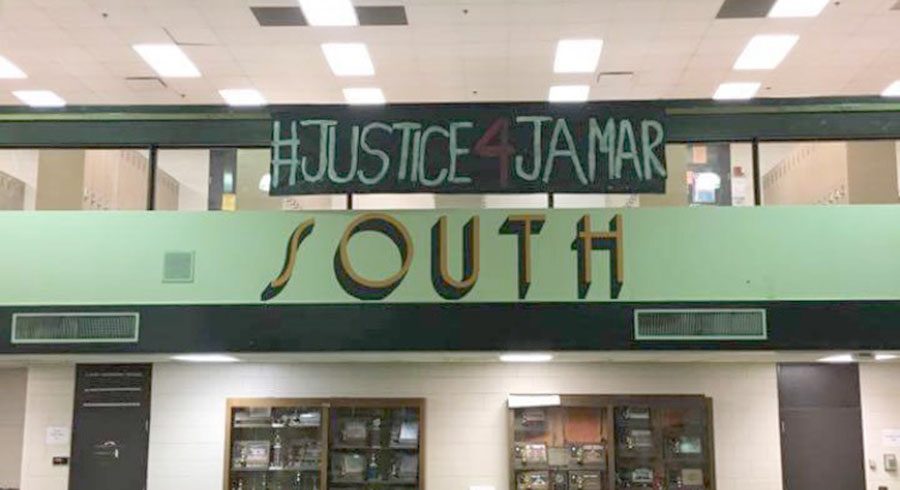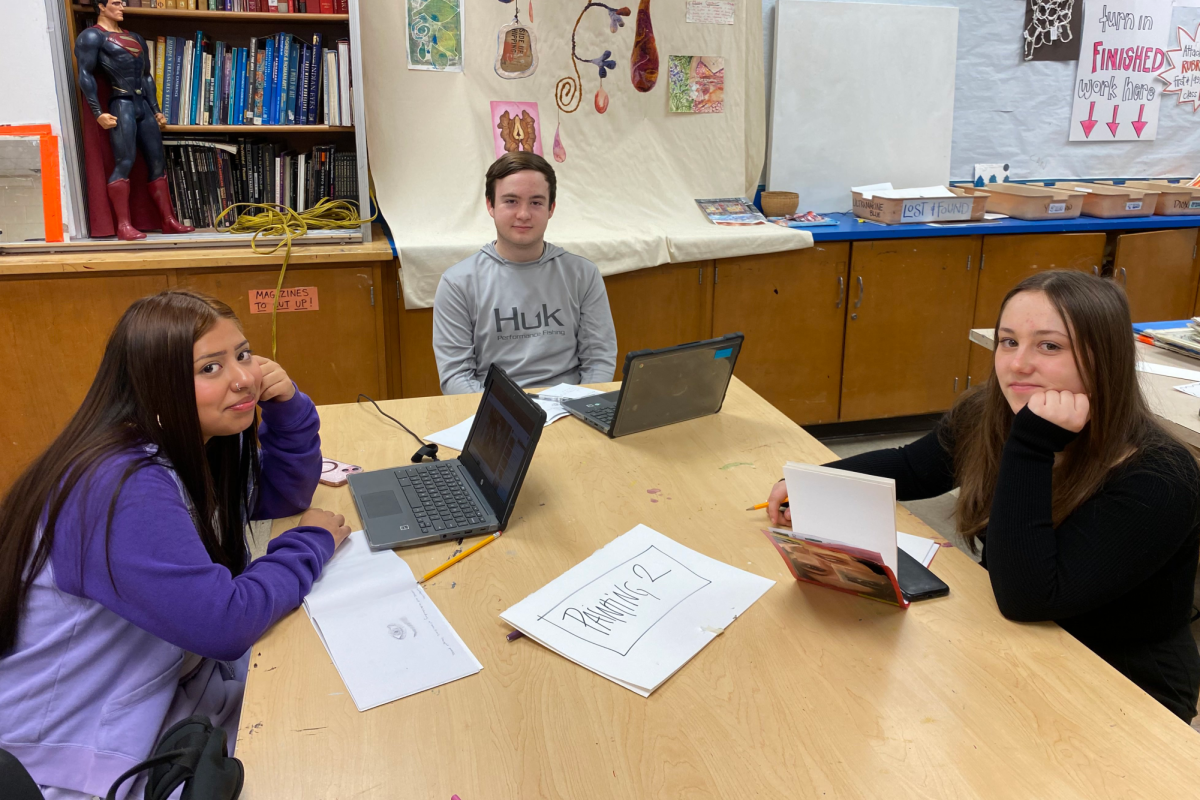Editorial from the 2016 spring print issue, Jamar Clark
A banner for #JusticeforJamar hangs in the South High Commons. Students organized a sit-in on April 5th to respond to the non-indictment of Minneapolis police officers Mark Ringgenberg and Dustin Schwarze, who killed Jamar Clark.
April 14, 2016
After the non-indictment of Mark Ringgenberg and Dustin Schwarze, the two police officers who shot Jamar Clark, the South community grieved and raged once again.
While Attorney Mike Freeman presented his case as objective fact, it was littered with bias. One glaring issue is the testimony of RayAnne Hayes. In her initial interview with the MPD in the hospital and a later interview in the NAACP press conference, she insisted she was not in a relationship with Clark, nor had he had broken her ankle.
Freeman’s choice to identify Clark as Hayes’ abusive boyfriend despite contradicting evidence from the alleged victim herself was a move to manipulate the public perception of Clark – making him appear vicious and deserving of his fate. This is an unacceptable abuse of police authority. What is more, many of Schwarze and Ringgenberg’s statements about the 61 seconds are uncorroborated by a single witness, but were upheld at Freeman’s press conference.
This same power differential was apparent when Police Chief Harteau facilitated a seemingly innocuous event. The Chief Harteau Youth Summit was originally planned to take place at MCTC, but was relocated to the special operations center and Police Activities League of the MPD in the building that was formerly Hamilton Elementary school.
The symbolism was unnerving. Instead of hosting the summit at a space that is neutral ground for both youth and police, the organizers ignored this request and held it at one of their spaces.
This alone created a hostile environment, and a favorable one for the MPD. The space was supposed to be an opportunity for youth to safely express their frustrations with the police but turned into an opportunity for police to place blame on Minneapolis’ youth and youth workers.
The Chief repeatedly dismissed the comments of high schoolers who expressed confusion and frustration with police behavior and the system. She invited students to share their thoughts, then turned to the rest of the room and explained why they were wrong.
Adult youth leaders, who planned to take a backseat role in the discussion, felt compelled to defend students’ opinions and refocus the conversation back onto the issues that the youth raised. When we debriefed the summit, many adults were appalled at the airlessness in the room, gaining empathy for youth who experience powerlessness daily. The summit was a case-in-point example of the power differential that all youth, but above all youth of color, confront when trying to influence necessary reform.
The de-escalation and implicit bias trainings that the MPD has planned are a step in the right direction, but alone they are not enough. In order to give power and dignity back into neighborhoods of color, we need to begin a serious conversation about de-arming police. The phrase “community policing” needs to be a reality.
As we learned again at the sit-in, South students and their families have suffered demeaning and immoral treatment by the police. Many described feeling “numb” to the verdict after so many similar outcomes. We urge the South community to continue to support one another and speak truth to power.






